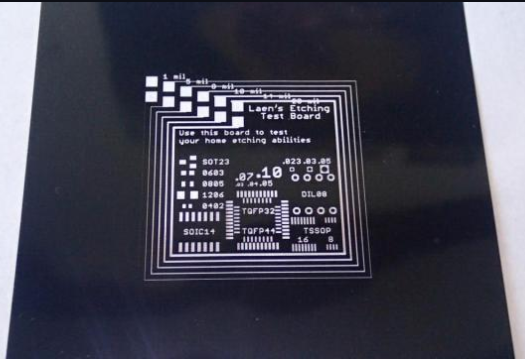Advancements in SMT and PTH Assembly Techniques
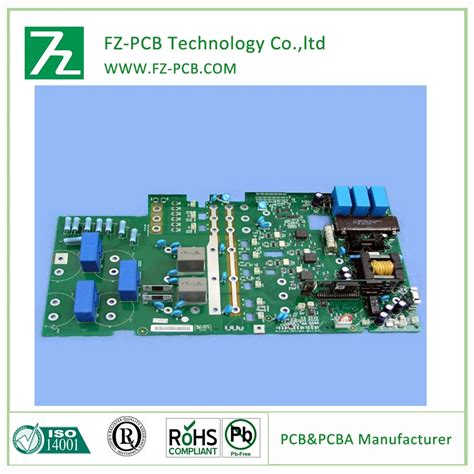
Key Takeaways
The landscape of SMT (Surface Mount Technology) and PTH (Pin Through Hole) assembly techniques is continually evolving, driven by the necessity for improved pcb assembly methods and the constant quest for efficiency in production. Recent advancements have focused on integrating automation and cutting-edge technology to streamline these processes, greatly enhancing the overall effectiveness of pcba (printed circuit board assembly). For instance, innovations in machine vision systems have significantly increased accuracy, allowing for precise component placement that reduces errors during the assembly process. Additionally, implementing real-time data analysis enables manufacturers to monitor performance metrics closely, assisting in identifying potential challenges early on.
“With every advancement in technology, there lies an opportunity to enhance efficiency and reduce costs while maintaining high standards in quality.”
Furthermore, exploring sustainable materials and eco-friendly practices has become paramount as businesses aim to address environmental concerns while keeping production costs down. The push towards a more sustainable approach has also fostered collaborations across the industry, promoting shared knowledge and resources that support continuous improvement. Companies that adapt swiftly to these emerging trends are likely to remain competitive while uplifting industry standards. Overall, understanding these key developments allows stakeholders to make informed decisions that benefit both their operations and the broader market landscape.
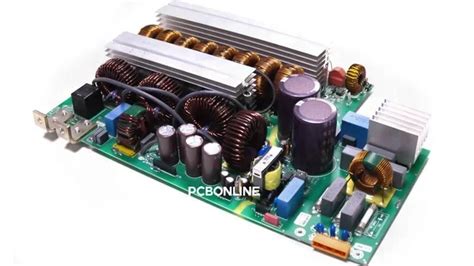
Introduction to SMT and PTH Assembly Techniques
Surface Mount Technology (SMT) and Through-Hole Technology (PTH) are two pivotal methods in the realm of pcb assembly, each with its own unique advantages and applications. As the electronics industry evolves, so too do the techniques utilized in pcb assembly, leading to enhanced efficiency, accuracy, and overall effectiveness in circuit board fabrication.
SMT refers to a method where components are mounted directly onto the surface of a pcb, enabling a more compact arrangement of electronic circuits. This approach not only saves space but also allows for greater circuit complexity and faster production times. In contrast, PTH involves mounting components through holes drilled in the pcb, providing robust mechanical support for larger components that may require additional stability.
The choice between SMT and PTH assembly often revolves around specific design requirements, production volume, and component types. Trends indicate an increasing reliance on SMT due to its suitability for high-density applications; however, PTH remains essential for certain applications that demand physical robustness.
As manufacturers look to innovate further within these frameworks, integrating advanced technologies such as automation and sophisticated inspection systems facilitates better control over both processes. These enhancements not only address industry challenges but also pave the way for future developments within electronics manufacturing.
| Assembly Method | Advantages | Ideal Applications |
|---|---|---|
| Surface Mount Technology (SMT) | Compact design, higher speed | Mobile devices, mixed-signal boards |
| Through-Hole Technology (PTH) | Enhanced mechanical strength | Heavy components, connectors |
In conclusion, understanding the nuances of both SMT and PTH assembly techniques is critical for professionals navigating today’s fast-paced electronics landscape. Balancing efficiency with component stability ensures that manufacturers can meet both current demand and future needs within this dynamic field of pcba.
Current Innovations in SMT Assembly Processes
In recent years, the field of Surface Mount Technology (SMT) has witnessed significant innovations aimed at improving the efficiency and effectiveness of pcb assembly processes. One notable advancement is the implementation of advanced automated machines that utilize machine vision systems, enabling precise placement of components onto printed circuit boards (PCBs). These systems not only enhance the speed of assembly but also ensure a higher level of accuracy, which is crucial for maintaining the integrity of pcba.
Another key innovation is the development of new solder materials and techniques that promote better thermal management and electrical performance. For instance, lead-free soldering options have become more prevalent, which aligns with global environmental standards while still providing reliable connections. Additionally, many manufacturers are adopting real-time monitoring technologies, allowing for instant feedback during the SMT process. This proactive approach helps identify potential defects early on, reducing waste and rework costs.
Moreover, the integration of Industry 4.0 concepts, such as IoT connectivity and data analytics, has transformed operational capabilities in SMT assembly lines. By leveraging big data analytics, companies can streamline their production processes and enhance decision-making. These innovations come together to not only address current industry challenges but also foster a more resilient and adaptive manufacturing environment for future endeavors in electronics production. As these advancements continue to evolve, they set the stage for further enhancements in SMT assembly, driving growth within the electronics manufacturing landscape.
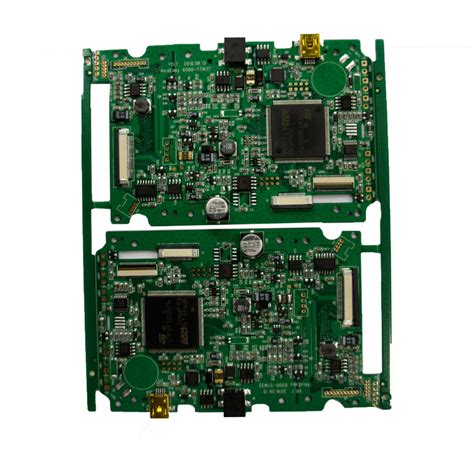
Enhancements in PTH Assembly Methods
Recent advancements in PTH (Through-Hole) assembly methods have played a substantial role in the evolution of pcb assembly practices, especially as the demand for complex electronics continues to rise. Innovations in materials and processing techniques have led to notable improvements in the efficiency of pcba (Printed Circuit Board Assembly) operations. One significant enhancement is the integration of automated soldering systems, which ensure consistent solder application, reducing the risk of defects and improving overall reliability. Furthermore, the introduction of advanced inspection technologies has facilitated real-time monitoring of assembly quality, allowing for timely corrections during production and minimizing waste. These step forward not only enhance accuracy but also increase throughput, enabling manufacturers to meet tight deadlines without compromising on quality. As environmental considerations become increasingly important, PTH assembly methods are also evolving with a focus on using lead-free materials and optimizing processes to reduce energy consumption. Overall, these enhancements signify a crucial stride towards making PTH assembly more adaptable and efficient, catering to the intricate needs of modern electronics manufacturing and ensuring competitive advantages in a challenging market landscape.
Efficiency Improvements in Electronics Manufacturing
In the fast-paced world of electronics manufacturing, PCB assembly has seen significant enhancements that prioritize efficiency. Recent advancements in Surface Mount Technology (SMT) and Through-Hole Technology (PTH) have introduced innovative methods that streamline the production process. For instance, the integration of automated assembly equipment is refining workflows, reducing manual intervention, and minimizing the chances of human error, which in turn boosts overall productivity. Additionally, new software solutions are facilitating better resource management and real-time monitoring of assembly lines, allowing manufacturers to quickly identify bottlenecks and optimize processes. Techniques such as pick-and-place machines are becoming increasingly sophisticated, enabling faster assembly of components onto PCBs with greater accuracy. The result is a considerable improvement not only in turnaround times but also in the quality of the assembled products. Emphasizing cost-effectiveness, manufacturers are leveraging these advancements to lower operational costs while maintaining high standards in PCBA quality and reliability. As a result, companies are poised to enhance their competitive edge while meeting the growing demands for efficient production and timely delivery in a rapidly evolving market.

Accuracy and Precision: The Role of Technology
In the realm of pcb assembly and pcba, achieving accuracy and precision is imperative for successful outcomes in electronics manufacturing. Technological advancements have significantly transformed the benchmarks of accuracy in smt & pth assembly processes. Sophisticated software tools, enhanced inspection equipment, and automated placement machines contribute to a higher level of precision than ever before. These innovations not only minimize human error but also ensure that components are placed with remarkable accuracy on printed circuit boards. Furthermore, real-time monitoring systems now enable manufacturers to detect discrepancies immediately during the pcba process, thereby maintaining consistency throughout production. The incorporation of advanced algorithms and artificial intelligence assists in optimizing assembly operations, facilitating adjustments that align with stringent quality control standards. As these technologies continue to evolve, they promise to redefine the expectations around manufacturing accuracy, ultimately leading to better product performance and reliability in the rapidly advancing electronics landscape.
Cost-Effectiveness in Assembly Techniques
The pursuit of cost-effectiveness in SMT (Surface Mount Technology) and PTH (Through-Hole Technology) assembly has led to significant advancements in pcb assembly processes. Manufacturers are now keenly focused on optimizing both materials and methods to achieve maximum efficiency without compromising quality. Innovations such as automated inspection systems and real-time monitoring have played a crucial role in reducing production costs while enhancing the overall accuracy of pcba (printed circuit board assembly) outputs. By integrating smart technologies, companies can identify defects early, preventing costly rework and waste that would otherwise inflate expenses. Moreover, the adoption of advanced materials that require less time and fewer resources to process further contributes to a more economical assembly line. As industry players adopt these new techniques, the resultant cost-effectiveness not only improves profit margins but also fosters a competitive edge in the constantly evolving electronics market. Emphasizing these advancements within SMT and PTH methods allows manufacturers to address both current challenges and future demands more effectively.

Addressing Industry Challenges in SMT and PTH Assembly
The realm of SMT (Surface Mount Technology) and PTH (Pin Through Hole) assembly faces several challenges that necessitate constant innovation and adaptation. One of the primary obstacles is managing the complexity of modern PCB assembly requirements, where components are increasingly miniaturized and densely packed. This complexity can lead to difficulties in ensuring the accuracy and reliability of PCBA (Printed Circuit Board Assembly) processes. Additionally, manufacturers often grapple with the balancing act between speed and quality; as demand for faster production cycles increases, maintaining the high standards necessary for successful assembly becomes a significant challenge. Moreover, supply chain disruptions frequently impact the availability of crucial components, pushing manufacturers to seek alternative sourcing strategies while maintaining cost-effectiveness. To address these issues, companies are increasingly turning to automation and advanced technologies such as Artificial Intelligence (AI) and machine learning. These innovations not only streamline operations but also enhance real-time monitoring, allowing for quicker responses to defects or process deviations. As the industry evolves, a proactive approach that embraces these advancements can lead to overcoming prevailing challenges, ultimately driving better outcomes in SMT and PTH assembly processes.
Future Trends in Electronics Manufacturing and Assembly
As the demand for smaller, faster, and more efficient electronic devices continues to rise, the pcb assembly landscape is undergoing significant transformations. One of the leading trends is the integration of advanced automation technologies in both Surface Mount Technology (SMT) and Pin Through Hole (PTH) assembly processes. Automation not only streamlines manufacturing workflows but also increases precision, thereby enhancing overall product quality. Additionally, there is a growing emphasis on smart manufacturing frameworks that leverage the Internet of Things (IoT) and artificial intelligence to gather real-time data during the pcba process. This data-driven approach allows for better prediction of equipment failures, improved maintenance schedules, and optimized production lines. Furthermore, sustainability is becoming a central theme in electronics manufacturing. Companies are increasingly adopting eco-friendly materials and methods that minimize waste while maintaining cost-effectiveness. As these trends develop, manufacturers must stay ahead by continuously adapting their strategies in smt & pth assembly to meet evolving market demands and operational challenges.
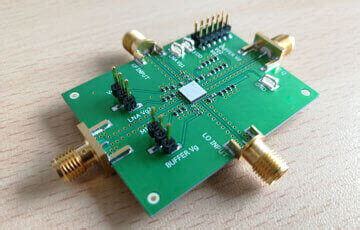
Conclusion
In summary, the landscape of SMT (Surface Mount Technology) and PTH (Through-Hole Technology) assembly techniques is continually evolving, driven by the need for enhanced efficiency, accuracy, and cost-effectiveness in electronics manufacturing. The integration of advanced technologies has significantly influenced the processes involved in pcb assembly, leading to improved outcomes. Innovations in materials, automation, and inspection methods have transformed traditional approaches, making PCBA (Printed Circuit Board Assembly) more reliable and responsive to industry demands. As manufacturers adopt these cutting-edge techniques, they are not only overcoming existing challenges but also paving the way for future advancements. The ongoing exploration of sustainable practices, coupled with the rise of smart technologies, suggests a promising trajectory for the industry as it moves toward more sophisticated and integrated production methods. Ultimately, understanding these trends will be crucial for stakeholders looking to remain competitive in an ever-changing environment.
FAQs
What are SMT and PTH Assembly Techniques?
SMT (Surface Mount Technology) and PTH (Pin Through-hole) are widely used methods in pcb assembly. SMT involves mounting electronic components directly onto the surface of a printed circuit board, while PTH requires components to be inserted through holes and soldered to the other side. Both methods play crucial roles in creating efficient and reliable pcba.
What are the advantages of using SMT over PTH?
The primary advantages of SMT include a higher component density, reduced space on the pcb, and improved electrical performance. Additionally, SMT components are generally lighter and smaller, contributing to a more compact design. This innovation enhances efficiency in the overall pcb assembly process.
How do recent advancements improve assembly techniques?
Recent advancements in technology have led to significant improvements in both SMT and PTH processes. Innovations such as automated assembly lines and advanced soldering techniques enhance precision and accuracy while reducing costs. These developments ensure that manufacturers can create high-quality pcba with increased efficiency.
What challenges does the industry face with these assembly techniques?
The electronics manufacturing industry faces challenges such as component miniaturization, ensuring reliability under varying conditions, and managing production costs. As smt & pth assembly evolves, addressing these challenges is essential for maintaining competitive advantages.







